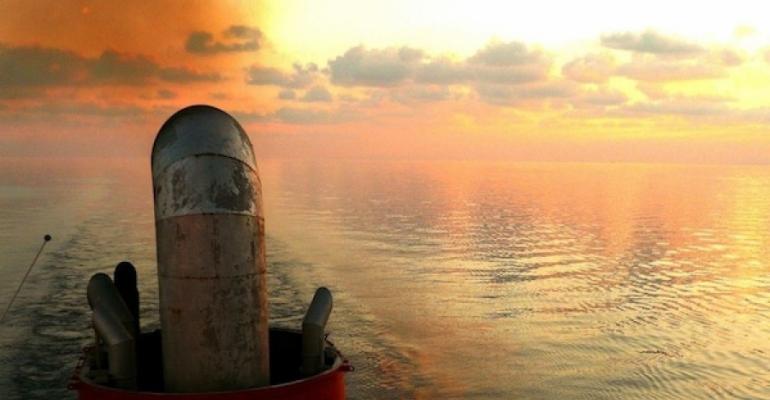Industry officials warn that anyone hoping for the IMO to delay implementation of the 0.5% sulphur cap as happened with the Ballast Water Management (BWM) Convention is highly likely to be disappointed.
“2020 – I think we know that is going to happen. There is no turning back,” Mario Moretti, Area Manager SE Asia for RINA told Mare Forum Singapore 2018 on Thursday.
Korean Register executive director Kim Yeon-Tae delivered a similar message in a statement on Wednesday: “If the implementation of sulphur cap 2020 is postponed once again after the BWM Conventionn, IMO will lose public confidence and face a significant obstacle to the smooth implementation of any future conventions. In reality, the chances of postponing the sulphur cap 2020, are very, very small.”
This is in line with the statements of IMO secretary-general Ki-tack Lim, who has said there is no turning back on the sulphur cap.
Apart from using either low sulphur fuels, which will likely be blended, or gas oil, the two main alternatives for oceangoing tonnage are fitting a seawater scrubber or adopting LNG as an alternative fuel.
To date only a relatively small number of owners have opted to fit scrubbers which can cost in the region of $3m - $4m. Moretti said by 2019 there would be around 320 ships fitted with scrubbers. If as seems increasingly likely carriage of high sulphur fuel by ships not fitted with scrubbers is banned he said this could trigger more investment in scrubbers.
Shipowner Coco Vroon, was not overly positive about Vroon's experience with scrubbers. “We're operating five vessels with scrubbers, they perform when they are needed, but they require an awful lot of attention,” he said.
Currently Vroon is using the scrubbers to clean 1% sulphur fuel down to 0.1% in US, but if they could handle 3.5% sulphur fuel was another question. “Whether the scrubbers we have can cope with 3.5% sulphur we don't know. It's basically pumping sulphuric acid,” he said.
The corrosive nature of the exhaust gases from scrubbers was recently highlighted by underwater repair specialist Hydrex with it seeing more pipework repairs needed on vessels fitted with scrubbers.
John Su, president and ceo of Erasmus Shipinvest Group, said that market support was required for owners to make the bold move to invest in scrubbers. “If the BDI hits 3,000 points every owner would fit scrubbers,” he said. Others were less optimistic on the demand for scrubbers. “I don't see many dry bulk owners gambling on scrubbers,” said Arjun Batra, group md of Drewry.
The other major option is LNG fuelled engines, which were orginally seen as a lower cost solution when the oil price was high, but are now being viewed as environmental alternative with them giving off no SOx or NOx emissions.
Moretti of RINA noted the issues with availability for bunkering infrastructure and the technical issues of operating LNG vessels. He also highlighted the issue needing to dry inert the system prior to the drydocking of LNG fueled vessels.
Vroon said that they were looking at replacing their vessels fitted with scrubbers and that LNG was the “natural choice”. However, he also noted issues in terms of how secure supply of LNG as marine fuel would be and what the price would be in future. “Economically its one big guess,” Vroon stated.
Copyright © 2024. All rights reserved. Seatrade, a trading name of Informa Markets (UK) Limited. Add Seatrade Maritime News to your Google News feed.


